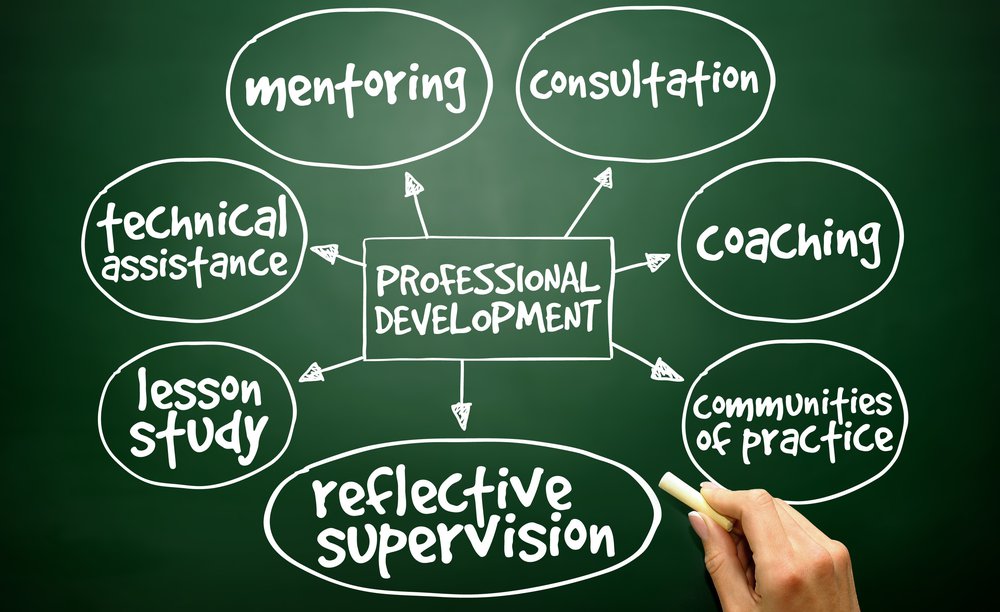Just 5 or 10 years ago professional development consisted of lectures, short workshops or a “boot camp” offered a few times a year. To teachers, sessions were often not useful and even seemed a waste of time. A lack of follow-up and on-site help left teachers falling back to what they were accustomed to and comfortable with. Classrooms were isolated “mini-kingdoms” and PD had no follow up or accountability. Students were the only one’s suffering for it and not getting the full benefit of digital curriculum and all it can offer.
Sure, “educating teachers” should result in better classroom instruction, but even today there are no hard scientific studies to prove PD results. A 2007 report commissioned by the Department of Education found that only 9 out of 1,300 PD studies met scientific evidence standards. Thousands of dollars were being spent with little known results.
Google “PD and effects on student learning,” and you will notice multiple studies between 2001 and 2011 on the relationship between PD and student achievement. After that, the numbers dwindle except in math and science in the elementary grades. However, with more districts moving to 1:1 learning, PD is starting to change.
A paradigm shift from teacher-centered to student-centered learning
Older teachers feel a culture shock and may be intimidated by the technology. The shift is not so traumatic for millennials (born in the 1980s or later) joining the teacher corps since technology use is already a part of who they are and how they function.
Today the vast majority of educators feel that technology is the wave of the future. But districts often think “tech” before thinking through the implementation strategy. So devices may be distributed before PD can train teachers how to use them effectively in their classrooms.
Many educators are not waiting for district PD
A 2015 teacher survey indicated that 90% thought that tech was important in the classroom and nearly 60% wanted to integrate it into their lessons but needed more training to do so. Of those who were successful, 38% trained themselves how to use devices by using YouTube and Twitter chat without credit or salary incentives to do so.
One such example was Jessica Anderson, Montana’s 2016 Teacher of the Year. Jessica wanted to use devices supplied by her district to create and use blended learning lessons in her teaching. She used BetterLesson’s to create her own program to do so.
Districts develop tailored PD programs to support teachers in the 1:1 shift
- Salisbury Township School District (Allentown, PA) midway in a 1:1 initiative implementation, aligned PD goals to every aspect of their shift to student centered learning. This included hiring needed tech personnel, updating the librarian’s job description and creating a new position to support the transformation. They also personalized the PD program to fit each teacher’s needs, provided summer sessions and supported teacher attendance to tech conferences and workshops outside of the district. Administrators evaluated Salisbury’s PD initiative on how well it was meeting the developing needs during the changeover. The District’s program won the Apple Distinguished Program for 2015-17 for its successes in enhancing and extending teaching and learning with thoughtful and innovative implementations of technology. The Apple Distinguished Program designation is reserved for programs that “meet criteria for innovation, leadership, and educational excellence, and demonstrate a clear vision of exemplary learning environments.”
- Another example is the PD initiative at Westside School in Seattle, WA. It was devised by IT departments, EdTech consultants and third party vendors. The initial classroom lesson didn’t involve computers. It focused on academic habits, community building, aligning and thinking with students about using a tool to assist with learning. They then familiarized students with how tech could make life easier and how to use tech to achieve that purpose. They emphasized ‘community building’ between parents, educators and students which contributed to 1:1 success. As a part of this, students were even invited to take part—providing suggestions and giving feedback and critiquing teaching strategies incorporated in the 1:1 implementation.
Combining resources to improve support
Districts and companies are working together to support teachers and districts with PD. Some examples include the BLEgroup (supports small districts’ change to 1:1 and PD), Common Sense Media (rates classroom materials and guidance in 1:1) and the BetterLesson’s program (works to improve teacher performance). All offer PD support for teachers and district leaders moving toward 1:1 learning.
PD Training & Camps
Another common and intensive approach are on-site training or “camps” followed with continuous on-the-job assistance until teachers are able to run with it. Take, for example, the teacher and administrative training that Houghton Mifflin Harcourt brings with them when implementing their platform and digital content in a district. Another successful example of a "camp" style solution is what Summit Public Schools in the San Francisco bay area is doing.
They created a summit base camp that starts at their headquarters with two weeks intensive training to develop the new skill-set of teaching in a personalized learning environment. “Summit base camp gave us the opportunity to learn their methods of instruction, use their dashboard called a PLP and work with them and schools around the nation to fully develop personalized learning for our schools,” said Vickie Vallet McWilliams, Director of Instructional Technology at Pasadena, TX ISD. The two weeks of training in California’s Bay Area was followed with on-site continuing education via a Base Camp leader who provides guidance and enables feedback by the teams. (You can see a video about this here: https://www.youtube.com/watch?v=hfnjal-twN4)
PD is a hot topic and will continue to be for years to come. Successful examples across the country show that it is a collaborative activity. Give teachers power and a say in the strategy and goals while administrators provide continuous support.











